Update August 2022: We finally removed the real toxicity from our basement in 2020. Not to get into the dirty details, but it’s safe to say it wasn’t dust or airborne particulates, yet it was foundation-destroying and long-term. Our air units, which were discredited and condescendingly dismissed in the original version of this post, have survived these years and continue to do excellent jobs at maintaining air quality. Leah and I too survived a horrific and catastrophic “renovation” where our decisions and our lives were no longer ours. Today I’m thankful to say we’re free again and our house, our business, and our family life is ours again.
Josh here, but no Building Block Quilt Along post from me today. Instead, I want to talk about something that’s often overlooked in fiber art hobbies and may contribute to potential health problems in the long term.
The issue is dust, which is the final result of the invisible particulate fiber matter that becomes airborne whenever fabric is cut and every time a needle strikes the fiber material on your machine.
This is the louvered door leading into our utility room where our furnace/air conditioner is located. It’s slatted to encourage airflow for one of our whole house air system’s intake (the other intake is located upstairs near our thermostat).
Here’s a better angle. That’s a solid layer of dust and grime caked on the door from years of heavy sewing machine use and fabric cutting. Note how the slats are far dustier than the frame of the door. This is due to the furnace intake drawing air in, thus making the door a sort of preliminary filter.
This is one of our two air filters I installed a few years ago because I worried about Leah breathing all the junk in the air that comes from heavy machine use. We bought two overkill, HEPA-certified units with the hope they would easily be able to keep the air moving and filter out the majority of the dust. This one is mounted on the wall above Leah’s cutting table, the other one we left mobile but it usually stays in Leah’s sewing room.
When either one or both are cut off for any significant period of time, you know! Just after one hour of both machines on at full bore your lungs will thank you and the air will feel so much cleaner.
However, in addition to air movement and air filtration, there are several more factors that come into play in our particular situation:

- We work in a full basement with very low ceilings and some odd rooms. There are only two return vents for our air system, each located on the ceiling. There is also original 1970s carpet on the majority of the floor, and the rest is original vinyl slapped onto a concrete slab. Our basement is full of dead space with inadequate air current.
- There is a lot of surface area–nooks and crannies, dozens and dozens of shelves, and on these surfaces are hundreds of small items (shown at right), all creating more space for dust to accumulate.
- Leah uses her machines daily and we cut a lot of fabric, not just for our projects but also for our French fuse interfacing and Quilt Kits which we offer in our shop. I recently started quilting myself too. When I made my first line of stitching on the sewing machine, the first thing I noticed was the tiny, smoke-like plume of dust that kicked up into the air when the needle hit the fabric. This matter doesn’t vaporize into nothing–it flies into the air in all directions, and some of it goes into your lungs.

Leah has gone through her fabric stash and is seriously downsizing. Today we’re dividing, measuring, and bagging yardage and scraps and will ebay the fabric later, most likely in the fall–so if you’re interested in nabbing a great deal on our fabric, be sure to
sign up for our newsletter or
follow Leah on Facebook to get the announcement when the fabric goes live on eBay.
You may not see the dust, but I assure you it’s there, and you’re breathing it. Unfortunately, dust is always going to be a side effect of working with fiber arts. Some people are more sensitive to airborne particles than others; Leah is practically immune, but I’ve taken to wearing a respirator when cutting fabric as I always go into a sneezing fit. However, even if the dust doesn’t seem to bother you at all, remember it is getting into your lungs.
Do you have a system for your sewing area? Have you ever thought about it? We would love to hear your thoughts on this issue, so please share in the comments section!
Until next week, let’s go… clean!
Josh

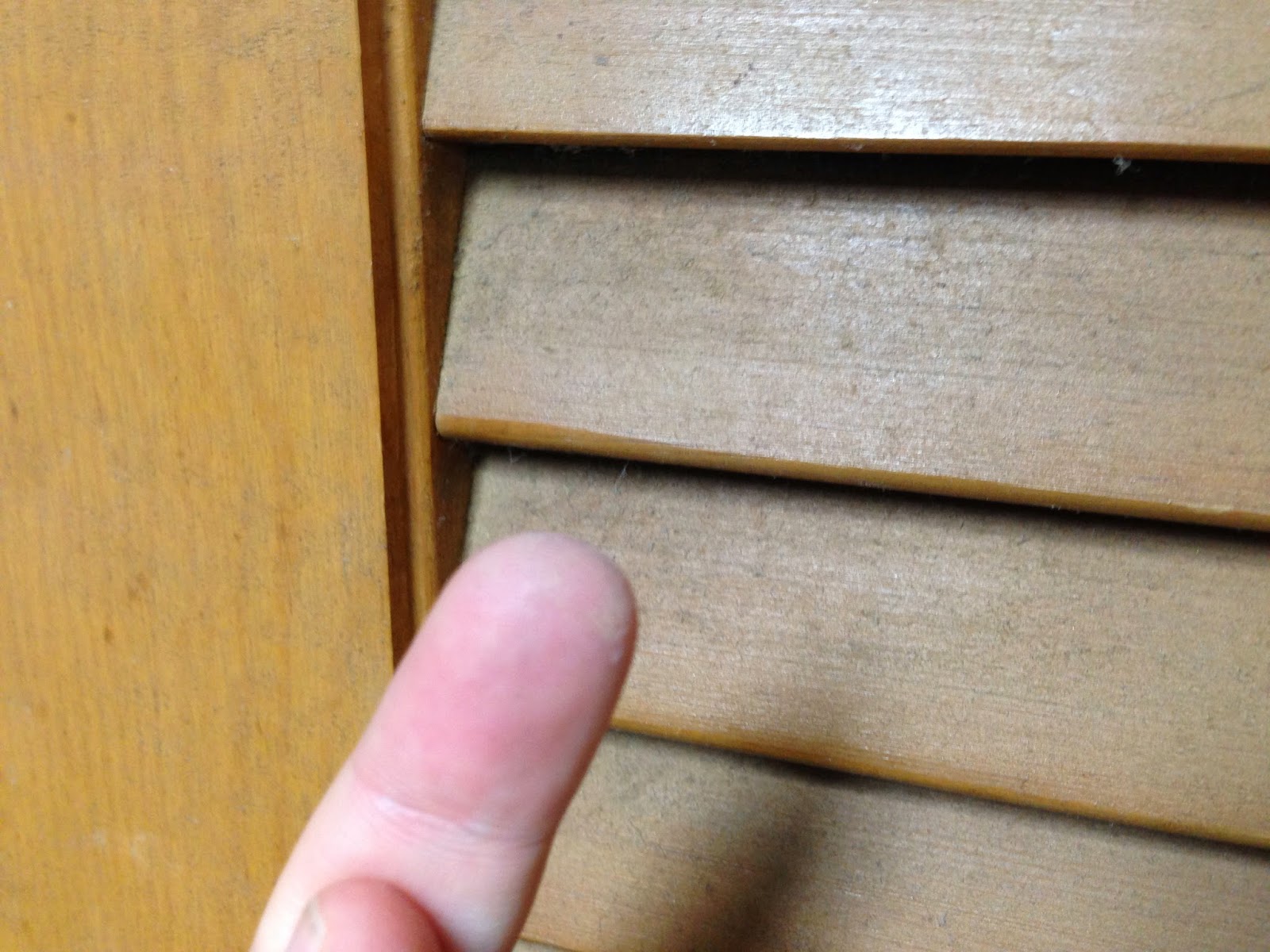
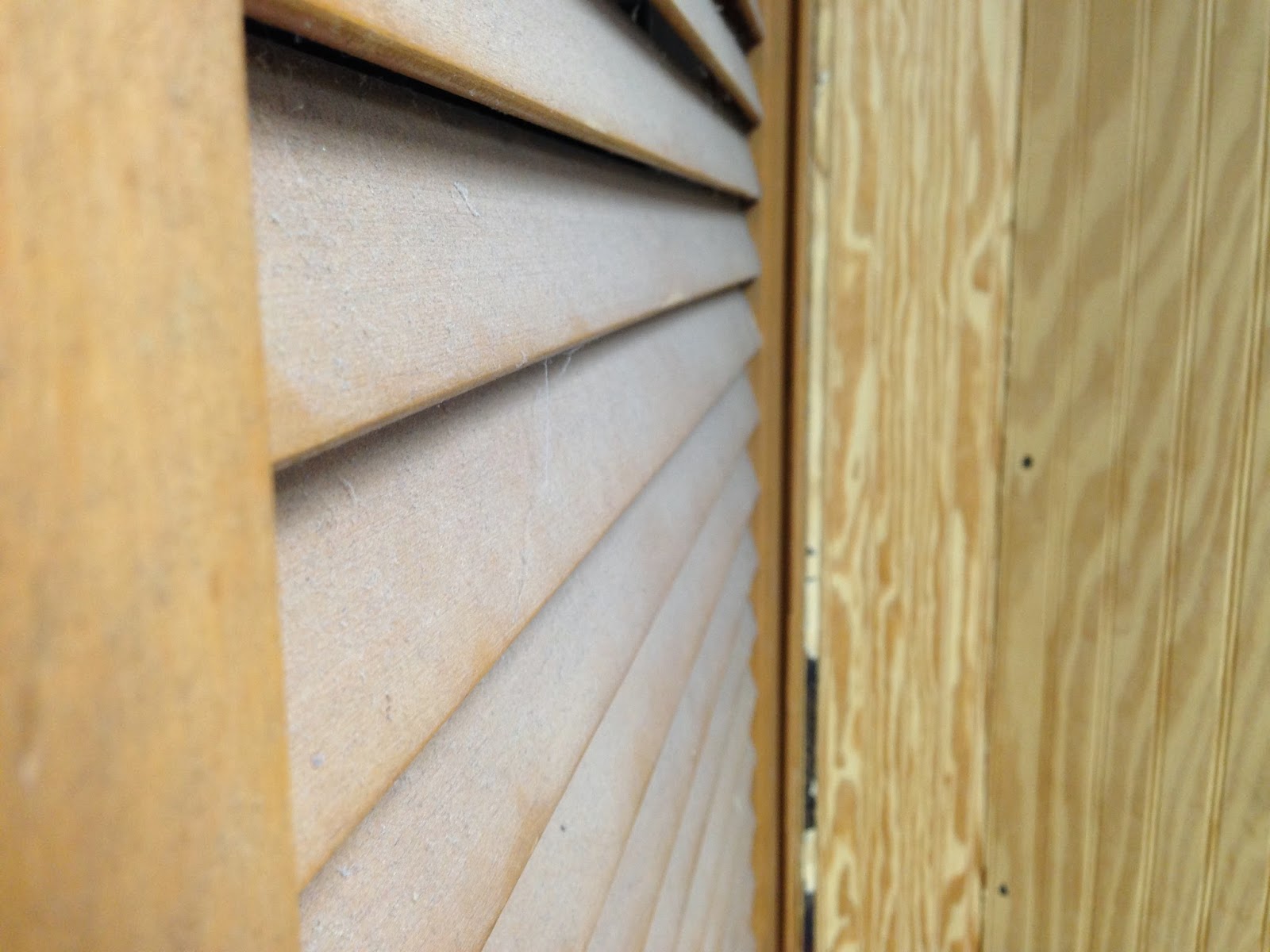
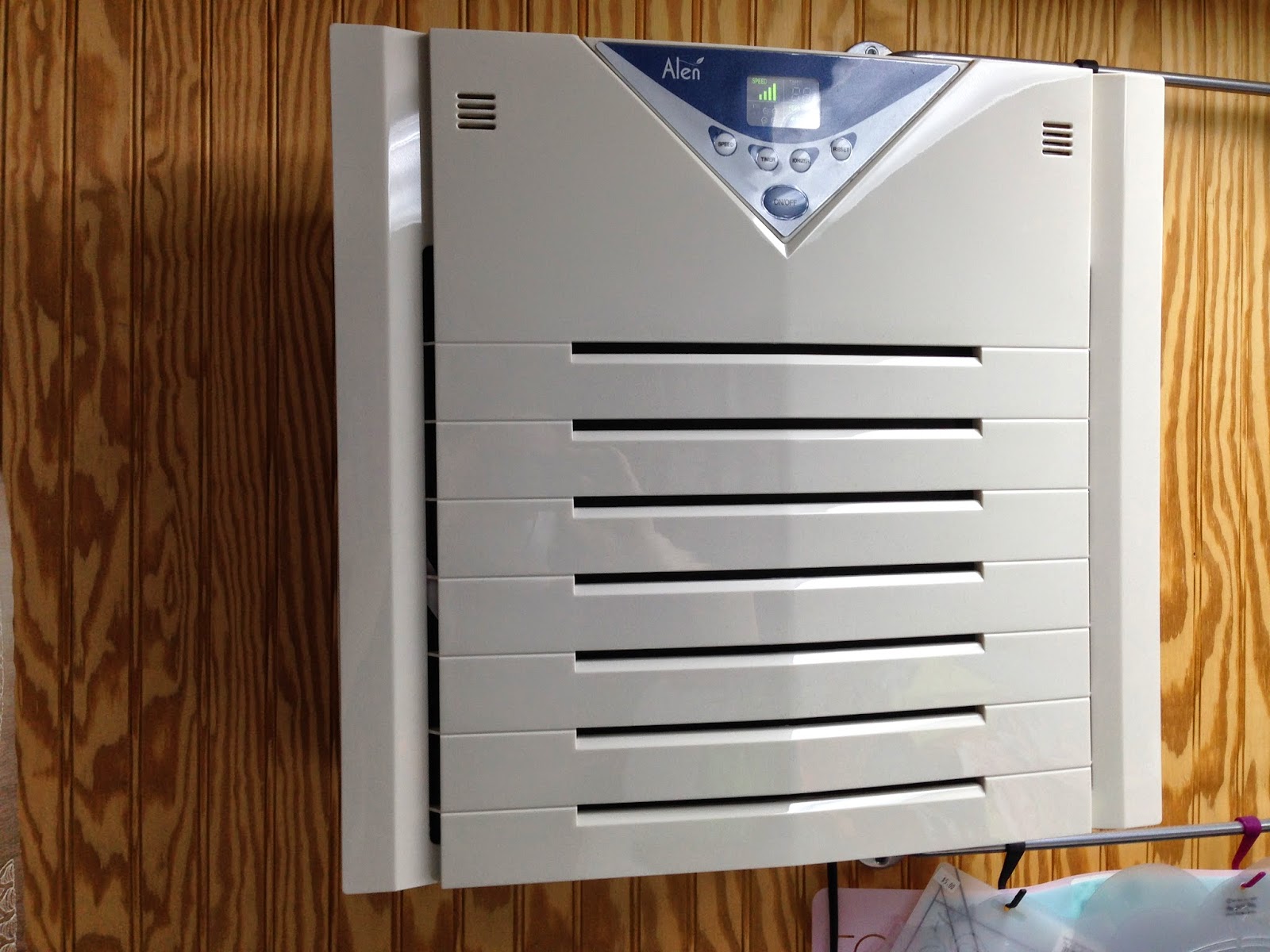
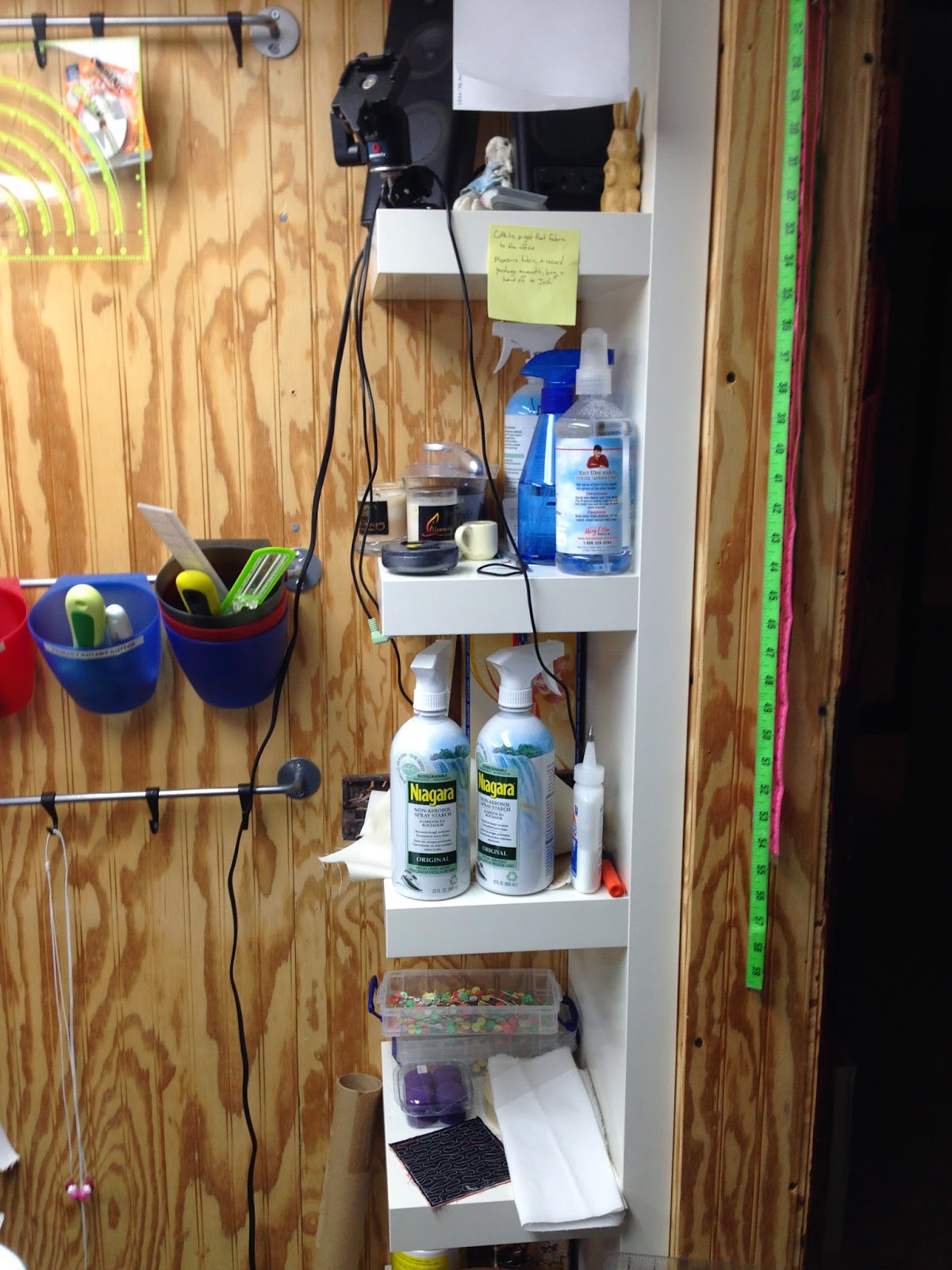
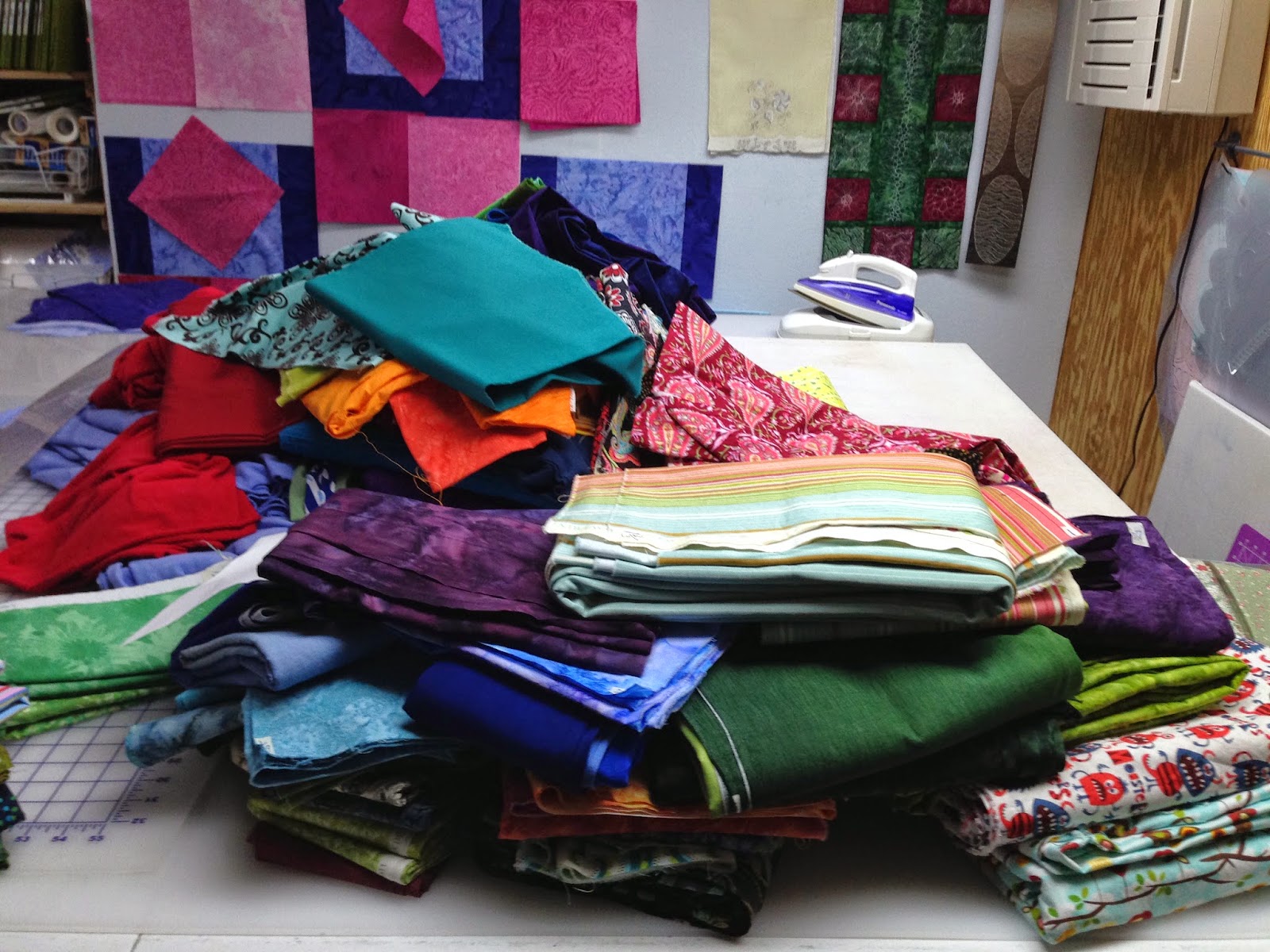
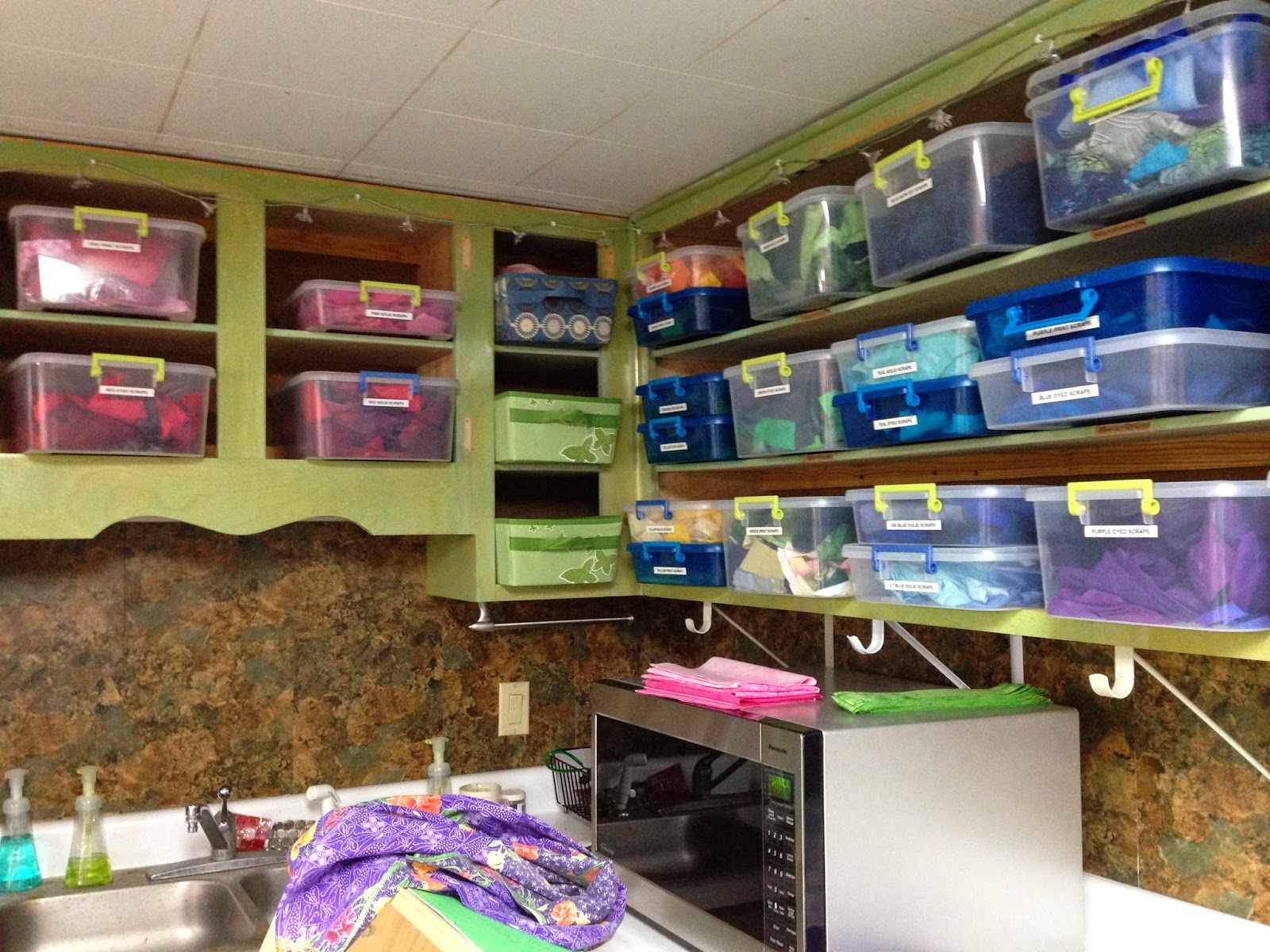
This is actually something that is HUGELY overlooked. Good for you! I'm also sensitive to dust & other airborne things, so my husband does the vacuuming on a schedule. My sewing room is in the basement and with an old carpet, but we rent. 🙁 We have spoken to the landlord about replacing the carpet and he's up for it. We just have to schedule it. And clear out my stuff! Yikes.
That's a huge job and it does take time (and away from sewing time) but even notice what dust collects on the top of the sewing machine. I don't cover mine; I probably should.
Great post, Josh, and a good head's up! I am also very allergic, and sensitive to the chemicals in fabrics as well. It may be the size and dye in the fabrics that makes you sneeze, rather than the dust.
I pre-wash all my fabrics, and they are stored in closed bins in a separate room in the basement. I also have managed over time to make closed-door storage for everything in my sewing area, so nothing is on open shelves. And I keep a "clean desk" policy from my days in banking, so everything is put away at the end of the day.
And, I just bought a Dyson cordless vacuum, which is awesome. My room has never been so clean!
Good luck with your reno. 🙂
Wow. Something I've never thought about . . .
I have found after a heavy cutting session I use the vac with the dusting brush them wipe off flat surfaces with a wet wash cloth. It picks up much more residue. Also we clean the furnace and change filters every 4 weeks even though they are 90 day filters. I also wash all the fabric that comes in the house to get the excess lint out before I cut it. Allergies to dust and dyes are a problem in my house. The only other thing I do is leave ceiling fans running all the time to make air circulate Summer and Winter. We live in the middle of a farm field and along a river that has it's own dirt to deal with. Way of life. Cleaning is on going. Chris
Monica, Leah uses Niagara starch spray, and that irritates my nose almost like nothing else. Thanks for the tips! The "clean desk" policy is definitely something Leah and I need to work on.
Andrea, glad to hear your husband takes care of that for you. When I vacuum, I wear a respirator–also when I mow the yard. It makes a huge difference. I'm working on convincing Leah to wear a respirator when she cuts fabric!
Thank you for this interesting post, Josh. Not something I'd ever really thought about. My studio is upstairs with windows and a ceiling fan (that could use some dusting now that I look at it!), so I think the pollen coming in the window probably bothers me more, but I never considered the dust while cutting and sewing. Just curious – do you use the non aerosol Niagara? I wonder if it's the propellant or actual starch. Do you react to homemade starch, like vodka starch? I use that for cost and to avoid aerosol, but just did a quick search and see Niagara offers a regular spray bottle version which I wasn't aware of.
Very good post. I have a sewing room upstairs. I find if I pickup when Iam done for the day, i am more productive the next day. I cover my machines to help keep the dust down there. We have ceiling fans to citculatr the air. Thanks again. I follow your and Leah's post daily. L
Hi Sarah – I've actually always used the Niagara in the spray bottle because I hate aerosol cans. So most like Josh is not reacting to propellant or chemicals from the starch, but from the dust being kicked up by the fabric.
I use an electric leaf blower and it is fabulous to get all of the dust. I also do not use any pledge, etc on my surfaces as it makes the dust stick worse. I use canned air to blow out from under the cabinets at the end of the day, then I have a robotic vacuum that I turn on and it gets all that is floating on the floor.
Love the idea of using a filter and a box fan.. will be giving that a try.
I don't like aerosol starch either. I have been making my own from sta flo concentrate and a repurposed spray bottle.
I have a Honeywell Air Cleaner in my room. I see how much dust is in the air every time I wash the filter. It is astonishing. Great topic to shed light on. Thank you for all your wisdom.
My husband and I have owned a heating and air conditioning business for over 30 years. One of the best things you can do is keep the furnace filter clean. If you can afford a high efficient air cleaner for your furnace, I would highly recommend it. Another thing anyone with central heat/or air can do is turn the fan switch on the thermostat to the "on" position. This will circulate the air in the entire house through the filter all the time and is very inexpensive to operate. A bonus is that you will feel cooler in the summer. Stand alone filtration systems cannot filter air that is not passing through them and most have a limited range.
Great post! I have never seen this addressed before. Thank you for a timely reminder to clean. And I'll have to try the dust mask when I cut fabric.
Great input about an impt issue. Like you, Josh, I'm sensitive We have a huge HEPA furnace filter. My sewing room on our main floor has better air circulation. But my longarm, 2ndary cutting table & batting are in the basement. I use a microfiber dust mop on the concrete floor. A vac just picks up all that dust & blows it out the back end again. I need to dust the concrete block walls more often, tho.
Also, please check your basement air for radon. Radon causes lung cancer and if you are in your basement hours on end sewing sucking in radon, that is not good either. But the key to diffusing radon is also air circulation, which it sounds like you are doing.
Thanks for a great post, Josh. This is also great information to take into consideration when renovating a space. Closed storage is a great idea for limiting spaces for dust to accumulate. If we want to see our stuff, we can always consider glass-front cabinets. One of these days, we'll get our basement done (which is where my sewing room is and will continue to be). I have my Mom and Dad's antique china cabinet and plan to use it for fabric storage. It's a sentimental piece and the closed, glass-front storage will be great for fabric and other things I store in it.
Wow, this is definitely something I hadn't thought much about at all!! Thanks for posting this reminder and info.
The fillers and finishes on new cloth can be highly toxic for some. They can also cause uneven stitches and gunk up your needle. Best practice is to wash and dry all cotton fabrics before they enter the sewing space. I use hot water and a hot dryer, mild soap like Orvus paste.
This is not practical for your commercial operation. You might want to look into commercial cutting solutions. Also, packing materials can outgas chemicals. External storage for your goods and supplies might be wise. Whatever you have in the air downstairs is contaminating your home and child. We love you guys and need you all to be healthy!
I just brought this very subject up in a sewing group on Facebook. Many commenters said it’s something that they don’t worry about and I shouldn’t worry about it either, that I should just live my life! But I believe there are some things we can control and some things we can’t. Breathing in fabric dust (which typically comes from chemically treated fabrics; and no, prewashing does not remove most of them) can potentially cause serious health issues. Someone who says they don’t smoke because it causes cancer is a hypocrite to say don’t worry about toxic fabric dust. How do we know that doesn’t cause cancer also? I prefer to reduce my risk.
I agree Lynn! Even with filters and doing better with vacuuming, our space is quite dusty. I’m working to make it a weekly habit to vacuum and clean off surfaces. Keeping the area clear of clutter is a very big key to feeling healthy in my space at least.
When I was sewing with polar fleece. My nylon shirt was covered with small dust right near my mouth. Next morning my eyes were caked even though I had washed it. My friend got sinus cancer. She sewed drapes in her cellar. Please don’t sew in your cellar. There are to many spores already in your cellar. You deserve to sew upstairs at least. Dust mites are getting in your lungs. People that sew are so generous. I want to keep them around. Please take care of your lungs.
Thank you for sharing. Yes, we’ve installed air filters and dehumidifiers to keep the air clean.
I have been a quilter for many years and when Covid was prevalent I spent a lot of time in my quilting room. Five months ago I developed this annoying cough, ultimately went to my Doctor who advised Zyrtec, Flonase & Mucinex but no improvement to the cough and I was starting to notice shortness of breath that was unusual for me. My Doctor ordered a CXR which showed “possible pulmonary fibrosis”, then had a CT scan which confirmed changes in my lungs. Ultimately ended up with a pulmonary specialist, and one of the first questions to me was “what are your hobbies” he has a fair number of quilters who are his patients with the same symptoms. So now, I have stopped quilting to see if I improve my breathing. I am not a smoker and have been a healthy woman. If I am able to return to quilting I plan to wear a mask, wash all my fabric and store it in containers, and get rid of some of it, instead of hoarding it!
Thank you ,great info.I too have developed a cough and told with X-ray and ct scan that I could have pulmonary fibrosis.However with repeated scan they say I’m fine. I am still coughing and still sewing, I do believe it’s the fibers and dust.